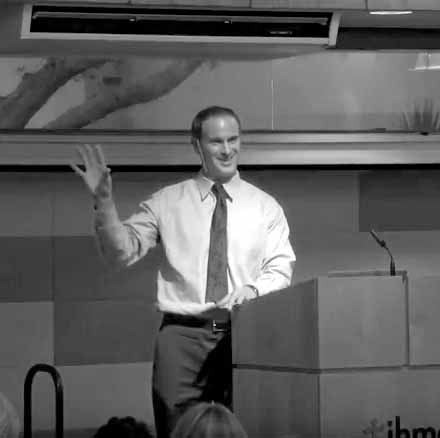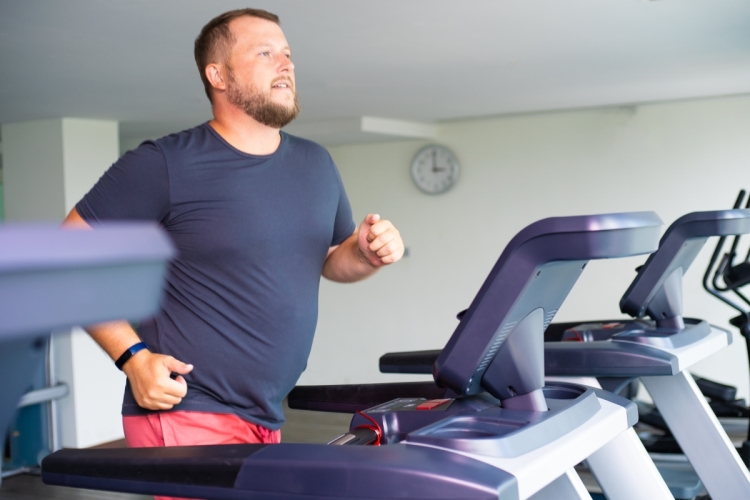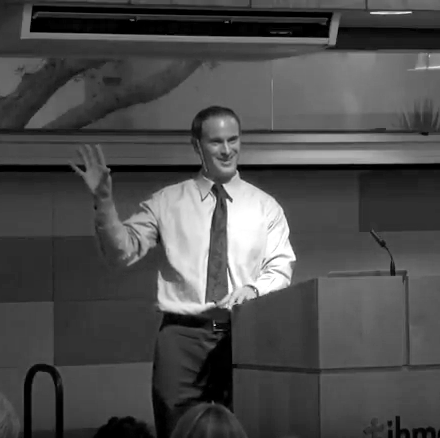Exercise and Metabolism: 3 Ways Exercise Can Boost Your Metabolism
Written by Stephen Anton PhD on August, 1st 2021

Can exercise influence your metabolism? Indeed it can… and does so in multiple ways!
Before we get into the many ways exercise can affect your metabolism, it is important to first define what is meant by “exercise” and “metabolism” since these terms can mean different things to different people. For example, the word exercise could mean going for a walk around the block, completing a full Ironman, or anything in between.
What Qualifies as Exercise?
For our purpose, “exercise” is any activity in which large muscle groups are purposely moved with the goal of improving health and/or fitness, and “Metabolism” refers to the multiple processes through which the body produces energy.
The metabolic process we are most familiar with is the process of converting the food (or calories) we consume into energy (ATP) our cells can use. But this is just one type of metabolic process. Our bodies also have the amazing ability to mobilize and utilize our own stored fat into an energy source (ketones) that can be used when glucose reserves are low.
Ok back to the original question, can exercise influence your metabolism?
The answer is a resounding yes! Below, we review three key ways in which exercise boosts your metabolism.
1. You Burn More Calories When You Exercise
The first and most obvious way is that you burn more calories while you exercise than while you are resting or not moving. When we move, a higher level of energy output is required than when we are sedentary, and typically the more intense the activity and number of muscles involved, the greater the amount of energy output required.
This means that, in order to maintain your current weight, on the days you are more active (greater output), you will need to consume additional calories (greater input) to stay in energy balance, with the number of additional calories needed being proportional to the activity output (or calories expended in the activity).
2. Increases Lean Body Mass and Resting Metabolism
In addition to directly increasing total energy expenditure through movement, exercise can also influence our body’s resting metabolism, that is the energy it takes to maintain the vital functions of our organs, without moving, in a 24-hour period.
Our resting metabolism is actually the largest contributing factor to our body’s total energy expenditure. If we can find a way to increase our body’s resting metabolism, we will naturally burn more calories throughout the day.
A logical follow-up question here is what is the primary driver of your body’s resting energy expenditure?
If you guessed your lean body mass, you guessed correctly. The more lean mass you have, the higher your resting metabolism.
So, the second way in which exercise, particularly resistance exercise, increases metabolism is by increasing lean body mass.
3. Increases Post-Workout Fat Burning
The third way in which exercise can influence metabolism is through the acute post exercise rise in metabolic rate and fat oxidation, aka fat burning that occurs for a number of hours after the activity.
In contrast to aerobic training, resistance exercises typically do not burn as many calories while they are being performed. The “after effects” of resistance exercise on our resting energy metabolism and fat oxidation (aka fat burning), however, can be dramatic if the right stimulus is provided.
Such effects are illustrated in a recent study, published in the journal FASEB, in which mice underwent a resistance training intervention. Shortly after the resistance training, certain genes got activated which help breakdown fat into fatty acids, which other cells then can use as fuel. So, the effects of the weight training was ultimately to reduce fat stores.
This post exercise rise in metabolic rate is directly proportional to the activity type, number and size of muscle groups worked, and the activity intensity. For this reason, exercises that work your legs and core are much more likely to increase whole body metabolic processes for several hours after the exercise compared to exercises that only target single muscle groups, such as preacher curls.
These benefits are particularly present following high intensity, weight training sessions, but can also occur after a sprint or interval training session.
Bonus: Fasted Exercise
There is one other type of exercise training that seems to really amplify fat metabolism (aka fat burning), that is fasted training.
One of the many benefits of training in a fasted state is that you train your body to produce energy from sources other than food. The added stress of moving while fasting will accelerate the activation of the body’s metabolic switch, the process through which the body mobilizes and uses its stored fat as an energy source,
Once this switch takes place, the body will have access to an abundant supply of energy!
At first it may be challenging but through consistent efforts, you can train your body to run off its own energy sources and also to become comfortable switching between external and internal energy sources based on available energy supply.
This is what is what is known as metabolic flexibility!
Both intermittent fasting and prolonged exercise are two great approaches to train your body to become more metabolically flexible. And when you combine the two, you can amplify the benefits of both.
Exercise and Metabolism Final Takeaways
As we just learned, exercise can boost metabolism in many ways. The additional movement helps burn more calories, resistance training can increase resting metabolism, and fat burning can last for many hours after a workout.
Not to mention, all effects can be amplified through fasted exercise.
While the effects of exercise on metabolism are exciting, it is recommended to increase exercise levels gradually. When starting a workout or exercise routine, slow and steady goes a long way. In this way, you can avoid injuries so you can enjoy the benefits of exercise for the long term.
Exercise and Metabolism: 3 Ways Exercise Can Boost Your Metabolism
Written by Stephen Anton PhD on August, 1st 2021

Can exercise influence your metabolism? Indeed it can… and does so in multiple ways!
Before we get into the many ways exercise can affect your metabolism, it is important to first define what is meant by “exercise” and “metabolism” since these terms can mean different things to different people. For example, the word exercise could mean going for a walk around the block, completing a full Ironman, or anything in between.
What Qualifies as Exercise?
For our purpose, “exercise” is any activity in which large muscle groups are purposely moved with the goal of improving health and/or fitness, and “Metabolism” refers to the multiple processes through which the body produces energy.
The metabolic process we are most familiar with is the process of converting the food (or calories) we consume into energy (ATP) our cells can use. But this is just one type of metabolic process. Our bodies also have the amazing ability to mobilize and utilize our own stored fat into an energy source (ketones) that can be used when glucose reserves are low.
Ok back to the original question, can exercise influence your metabolism?
The answer is a resounding yes! Below, we review three key ways in which exercise boosts your metabolism.
1. You Burn More Calories When You Exercise
The first and most obvious way is that you burn more calories while you exercise than while you are resting or not moving. When we move, a higher level of energy output is required than when we are sedentary, and typically the more intense the activity and number of muscles involved, the greater the amount of energy output required.
This means that, in order to maintain your current weight, on the days you are more active (greater output), you will need to consume additional calories (greater input) to stay in energy balance, with the number of additional calories needed being proportional to the activity output (or calories expended in the activity).
2. Increases Lean Body Mass and Resting Metabolism
In addition to directly increasing total energy expenditure through movement, exercise can also influence our body’s resting metabolism, that is the energy it takes to maintain the vital functions of our organs, without moving, in a 24-hour period.
Our resting metabolism is actually the largest contributing factor to our body’s total energy expenditure. If we can find a way to increase our body’s resting metabolism, we will naturally burn more calories throughout the day.
A logical follow-up question here is what is the primary driver of your body’s resting energy expenditure?
If you guessed your lean body mass, you guessed correctly. The more lean mass you have, the higher your resting metabolism.
So, the second way in which exercise, particularly resistance exercise, increases metabolism is by increasing lean body mass.
3. Increases Post-Workout Fat Burning
The third way in which exercise can influence metabolism is through the acute post exercise rise in metabolic rate and fat oxidation, aka fat burning that occurs for a number of hours after the activity.
In contrast to aerobic training, resistance exercises typically do not burn as many calories while they are being performed. The “after effects” of resistance exercise on our resting energy metabolism and fat oxidation (aka fat burning), however, can be dramatic if the right stimulus is provided.
Such effects are illustrated in a recent study, published in the journal FASEB, in which mice underwent a resistance training intervention. Shortly after the resistance training, certain genes got activated which help breakdown fat into fatty acids, which other cells then can use as fuel. So, the effects of the weight training was ultimately to reduce fat stores.
This post exercise rise in metabolic rate is directly proportional to the activity type, number and size of muscle groups worked, and the activity intensity. For this reason, exercises that work your legs and core are much more likely to increase whole body metabolic processes for several hours after the exercise compared to exercises that only target single muscle groups, such as preacher curls.
These benefits are particularly present following high intensity, weight training sessions, but can also occur after a sprint or interval training session.
Bonus: Fasted Exercise
There is one other type of exercise training that seems to really amplify fat metabolism (aka fat burning), that is fasted training.
One of the many benefits of training in a fasted state is that you train your body to produce energy from sources other than food. The added stress of moving while fasting will accelerate the activation of the body’s metabolic switch, the process through which the body mobilizes and uses its stored fat as an energy source,
Once this switch takes place, the body will have access to an abundant supply of energy!
At first it may be challenging but through consistent efforts, you can train your body to run off its own energy sources and also to become comfortable switching between external and internal energy sources based on available energy supply.
This is what is what is known as metabolic flexibility!
Both intermittent fasting and prolonged exercise are two great approaches to train your body to become more metabolically flexible. And when you combine the two, you can amplify the benefits of both.
Exercise and Metabolism Final Takeaways
As we just learned, exercise can boost metabolism in many ways. The additional movement helps burn more calories, resistance training can increase resting metabolism, and fat burning can last for many hours after a workout.
Not to mention, all effects can be amplified through fasted exercise.
While the effects of exercise on metabolism are exciting, it is recommended to increase exercise levels gradually. When starting a workout or exercise routine, slow and steady goes a long way. In this way, you can avoid injuries so you can enjoy the benefits of exercise for the long term.

Get the Beginner’s Guide to Intermittent Fasting
Take advantage of this FREE PDF and learn the basics of intermittent fasting.

Get the Beginner’s Guide to Intermittent Fasting
Take advantage of this 100% free PDF and learn the basics of intermittent fasting.

Get the Beginner’s Guide to Intermittent Fasting
Take advantage of this FREE PDF and learn the basics of intermittent fasting.









